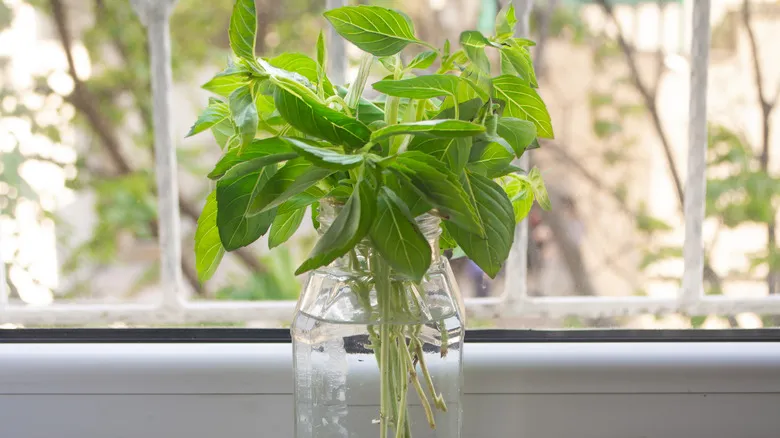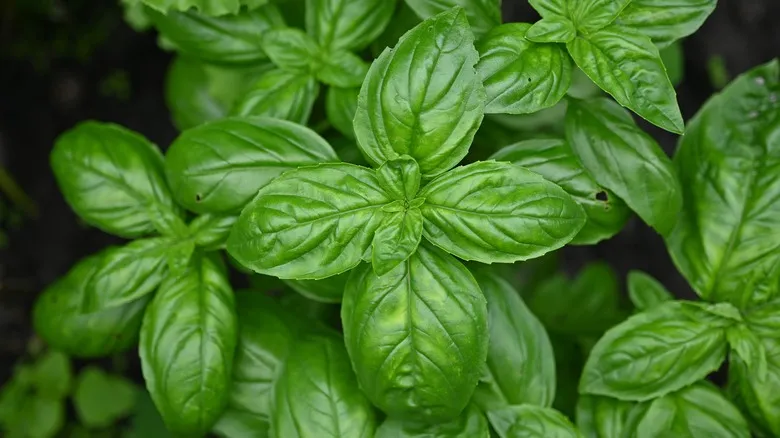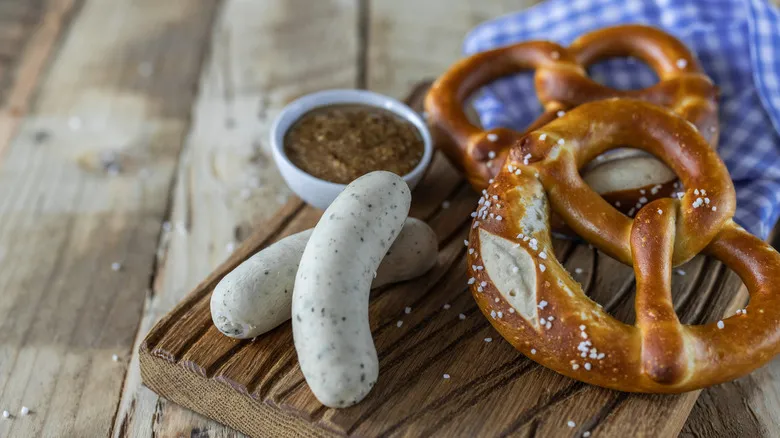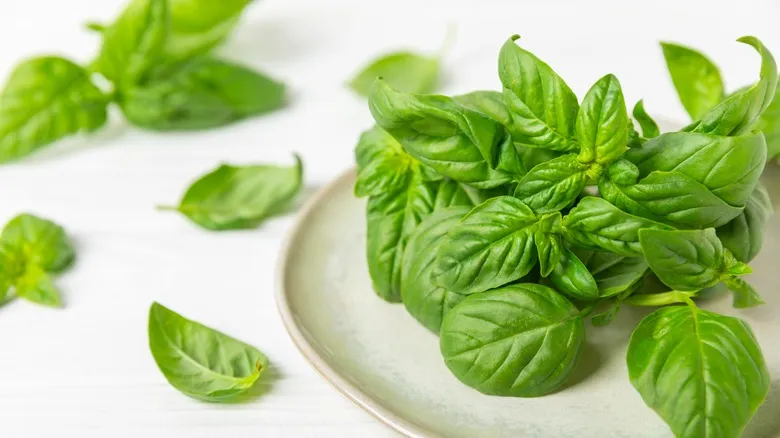The best way to store basil

When storing fresh basil stems, the common recommendation is to treat them like a bouquet of flowers. If the stems are intact, trim the ends slightly and place them in a glass jar with some water. The jar should be filled just enough for the stems to absorb water without submerging the leaves, as wet leaves can lead to spoilage. To keep the basil fresh for as long as possible, loosely cover it with a plastic bag. When kept at room temperature and away from direct sunlight, basil can last about a week or two. Remember to change the water every few days to prevent bacterial growth, just like you would with flowers.
If you have loose basil leaves that have been detached from the stems, the process is quite similar. Since the leaves can't drink water, there's no need for a jar. Instead, place the leaves in a plastic bag, gently sealing it to avoid bruising, which can cause discoloration and wilting. Avoid tying the bag shut; leaving it slightly open allows for some airflow to release any moisture that may accumulate. By following these steps, your basil should remain fresh until you're ready to use it.
Why basil doesn't last long in the fridge

When basil is stored in the refrigerator, you'll quickly see its tender leaves take a significant turn for the worse. The leaves begin to wilt, and eventually, the entire bunch collapses, with their vibrant green color fading to black—an unmistakable indication that your basil is no longer fresh for consumption. The rapid decline of basil may leave you questioning why this particular herb shouldn't be refrigerated, especially since many others, like mint, thrive in cold conditions.
To understand why basil struggles in the fridge, it's helpful to consider its natural habitat. Basil is native to Asia and flourishes in various subtropical and tropical regions around the globe, reflecting the cuisines it often features in. While it can suffer from excessive sunlight and become sunburned, basil generally prefers warm temperatures. It thrives best in conditions ranging from 70 to 85 degrees Fahrenheit, which are more akin to the warmth of your kitchen than the chill of the refrigerator. In contrast, herbs such as parsley and dill, which can be stored in the fridge, are hardier and can withstand cooler or even very cold environments. By learning about how basil and other produce grow, you can enhance your cooking experience.
Recommended

The Salty Seafood That Actually Works Wonders As A Pizza Topping

Amp Up Your Deviled Eggs With A Sweet And Saucy Ingredient

Mistakes You're Making When Cooking Or Baking With Lemons

The Traditional Bavarian Breakfast You Need To Start Your Oktoberfest Celebrations
Next up





